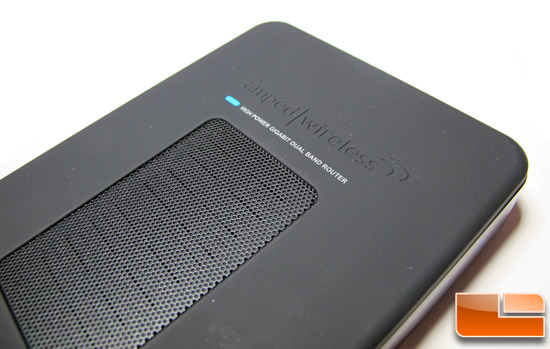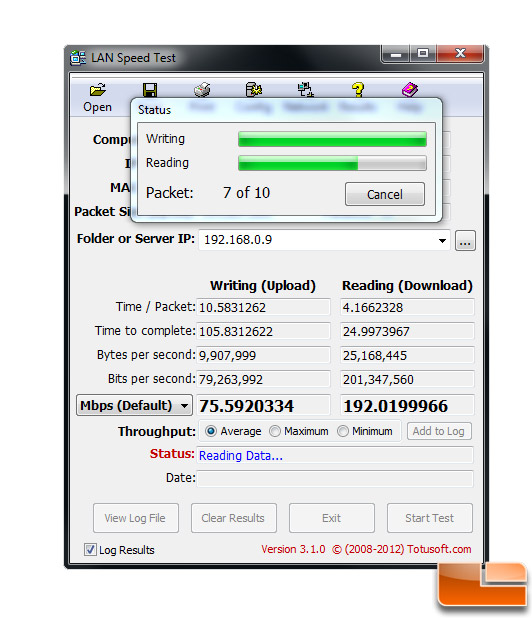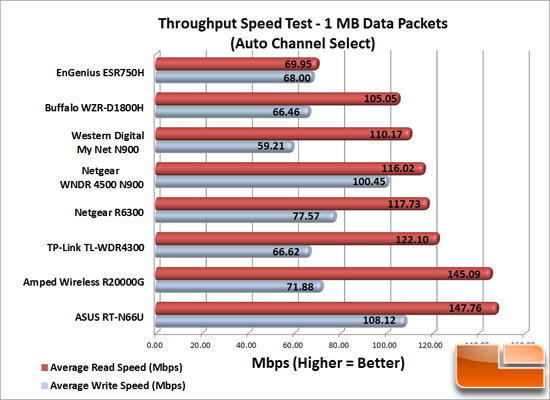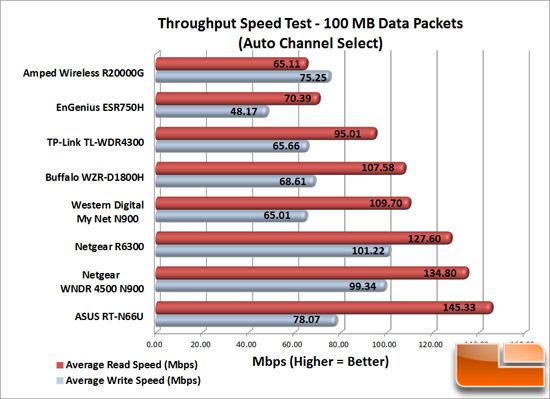Amped Wireless R20000G High Power Dual Band Router Review
Amped Wireless R20000G – Performance Testing

To test our router to simulate real world application use, we connected the Amped Wireless R20000G to our PC running Windows 7 64-bit and then configured the router to use Automatic settings for both 2.4Ghz and 5Ghz bands. We then took a laptop PC containing an Intel Centrino Advanced-N 6230 wireless adapter and moved it 25-feet away from the router. We didn’t tell the client anything more than the SSID for each router and let it automatically choose the channel to connect to. The router was set to Unsecure Mode (for fastest data throughput), and with WMM / QoS turned ON. After connecting, we ran the PC application LAN Speed Test (LST) to measure file transfer and network speeds.
LST builds a file in memory and then transfers the packet without the effects of windows file caching. It then reports the time and calculates the network speed. The latest version, (v.3.1.0), of this software was recently released which added a few new features with the ability to view average, minimum, and maximum speeds as well as test with simultaneous multiple streams. We found no measurable difference between the old version 2.0.8., just more features in the GUI.

We repeated the test 2 more times rotating the router 90 degrees after each test to make sure that the routers speed was not affected adversely by its orientation. We then plotted the average Read/Write speeds shown below:

Test Results: The 1 MB data packet speed test shows the Amped Wireless R20000G near the top of our speed tests barely losing out to the ASUS RT-N66U. Even though our Average Write speeds were in the middle of the pack, the R20000G easily outpaced our current favorite router, the Netgear R6300.

Test Results: The 100 MB data that we test here best simulates data that you would see if you wanted to stream high-definition video. To be honest, we expected the R20000G to do a bit better than it did in this test. Because we saw very good speeds in the 1MB testing, the 70 Mbps Read speeds for the larger packets disappoints us. Even though these speeds are on the low end, we still expect to success in streaming video to clients in a typical household.
Let’s look at some power usage numbers now.

Comments are closed.